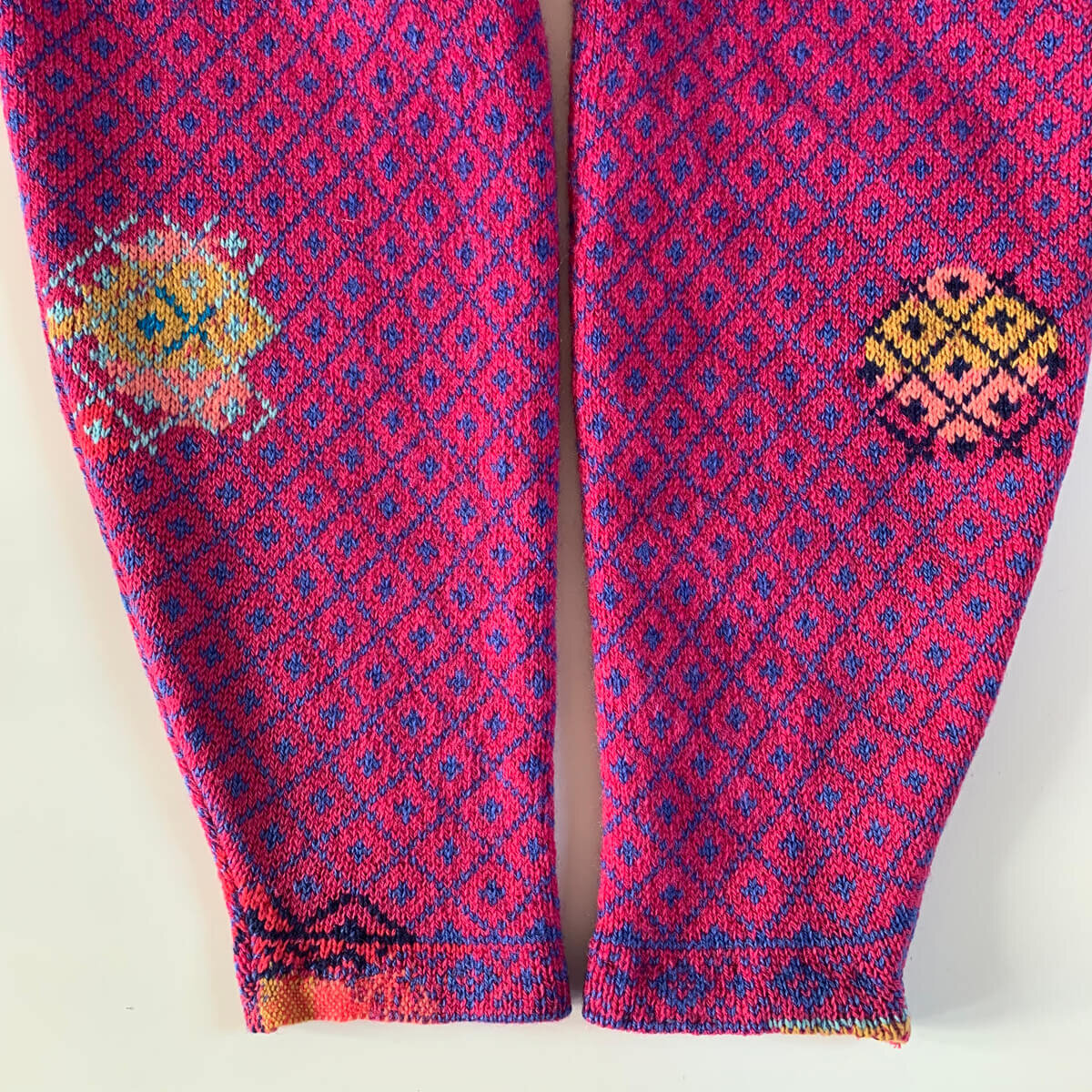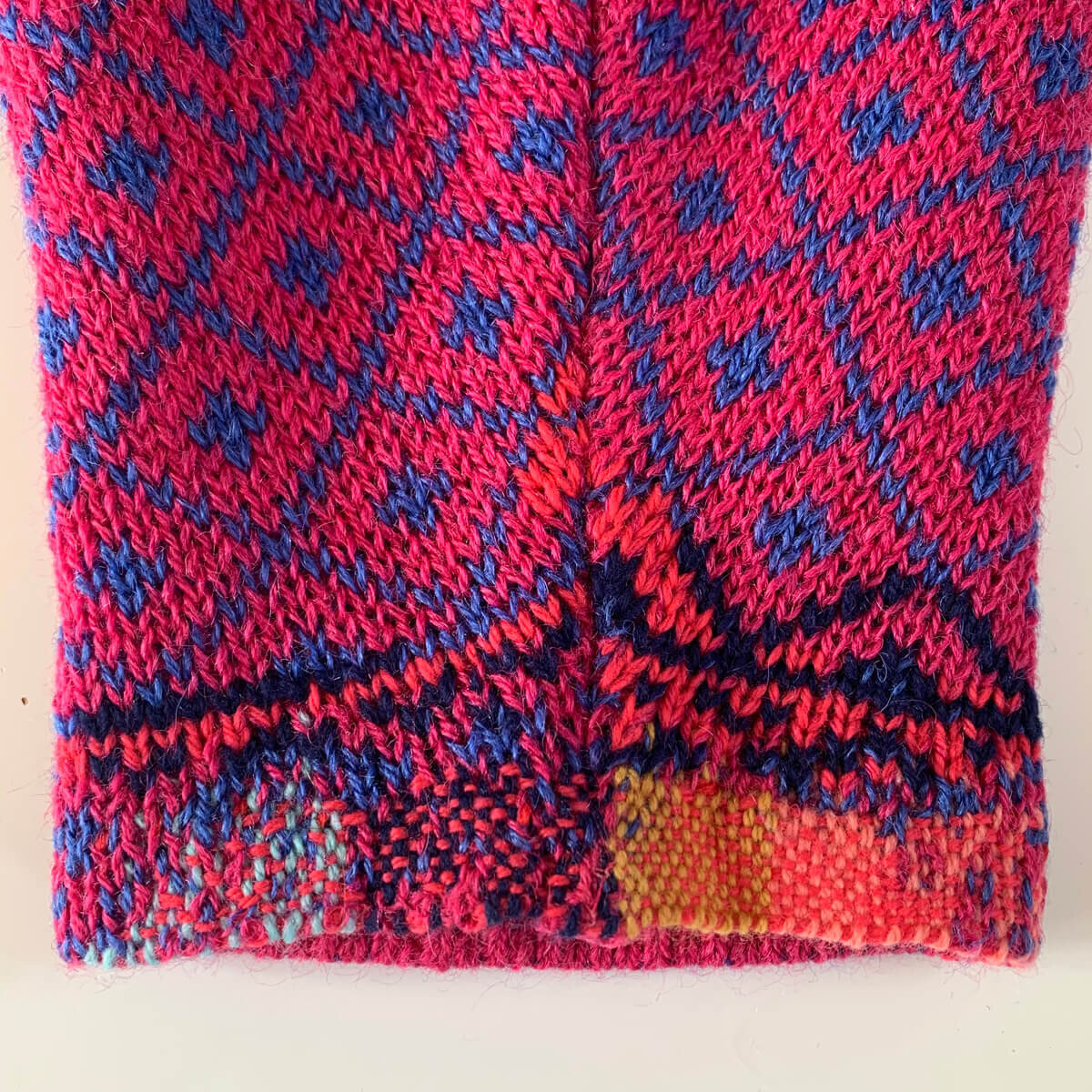A Month of Visible Mending
Over the last month I’ve been doing a lot visible mending. Maybe it’s because we’re still all wearing our winter woollies and noticing holes in them, but I’ve had quite a few commissions recently, as well as working on some of my own projects and creating some downloadable mending guides.
Visible Mending Commissions
I always enjoy knitwear mending commissions, and I thought I would share my favourites with you.
Recently I’ve had a few requests to mend things that aren’t knitted. This is by no means my speciality, but if the project looks do-able, then I love to do something different. This blanket is an example of that - a fairly thick weave with a large burn hole, and lots of smaller areas I think may have suffered from moths. I darned the large hole, deciding to follow the woven pattern, and sent instructions on how to mend the rest.
“I absolutely love what you have done to the blanket! It's so beautifully stitched.
We are taking it on as a family project and will slowly try and repair the rest of it. I am going to rope in my mum and mother in law to help and hopefully we will do a good enough job that it will last long enough to hand down.”
This is going to be a wonderful heirloom piece with so much love going into it by the time it’s completely finished, and I really hope I get to see it!
Starting to darn a hole in a woven blanket.
The finished darn, following the pattern of the weave.
Mending Cashmere Sweaters
I’ve had two cashmere sweaters sent to me to mend this month. One from someone locally, and one from the United States!
A local artist owns one of the sweaters, and as she specialises in wildlife, I wanted to mend the hole with something to fit with that. So, here’s the butterfly mend I created for her! I’ve used a variety of stitches, and my aim was to create a pretty feature so that no one will ever guess there was a hole there.
A creative mend, turning a small hole into a butterfly.
The other sweater had a few small moth holes, spaced over the sleeves and front of the sweater, and I decided on small darns to cover them. All the darns are different, but all in the same colours for continuity. Choosing the colours is one of my favourite bits - I love getting out a selection of yarns and working out which colours work best with the piece. I have a selection of lambswool, cashmere and silk yarns that I use, all left over from previous projects, so it’s a truly sustainable mending process, as I don’t buy in anything new for them.
“Thank you so much for your gorgeous work on this, I can't wait to wear it!”
Choosing the colours is one of my favourite bits!
A Swiss Darning Project
I was lucky enough to be sent a well-loved, 40 year old cardigan to mend. It had a fairisle pattern all over, so I decided it would be great to mend it using Swiss Darning where possible so I could keep the pattern but mend it in different colours.
The worn through elbow.
Worn button band, and hole to one side.
Damaged cuff.
One elbow was worn, the other worn through, there was a hole at the front, at the button bands and the cuffs were damaged and worn too.
The finished button bands, where I had to combine darning and Swiss darning.
One of the cuffs, combining darning and Swiss darning.
The repaired button bands and repaired hole on the front of the cardigan.
I did have to darn some areas, but mostly I was able to use swiss darning to repair it.
“My Mum is thrilled to bits with her restored cardigan!!! Thank you for the skilful and beautiful repair.”
If you have a well loved and worn piece of knitwear you would like me to mend, please send me some photos and a description of it to info@collingwoodnorrisdesign.com.
Visible Mending Workshops and Tutorials
This month I have also been planning new visible mending workshops, and have lined up workshops in Edinburgh and London.
Not only do I have my introduction to visible mending workshops, which focus on darning, I have also added a Swiss darning workshop, and a creative embroidery workshop.
As not everyone can make my workshops, I have started to create downloadable mending tutorials. These are step by step PDF guides taking you through creating a colourful darn, Swiss darning, Scotch Darning and some woven patterns for further darning ideas. My aim is to try and add more later in the year.
I’ve also added some packs of colourful lambswool you can use for your own mending projects.













